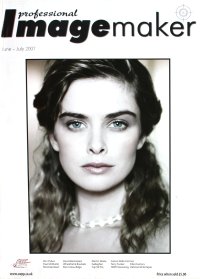articles/Paper/artexpression-page14
Paper Chase - Hahnemuhle - The Art of Expression - part 14 of 1 2 3 4 5 6 7 8 9 10 11 12 13 14
by Mike McNamee Published 01/06/2007
It is when we bespoke profiled the system that the fireworks began. Put simply, this is the most accurate colour data we have ever achieved from a printer/paper of any description ahead of hand tuning a profile. The average error was 3.6 LabΔE/2.26ΔE2000. The best data we have ever achieved was with a hand-tweaked profile onto special Epson proofing paper, a process that took the thick end of a day and a half. This dropped in at 2.09ΔE2000. The GMG RIP achieves this sort of precision at a cost of many, many thousands of pounds! We should not get too carried away by the statistics, for although the print is jaw-droppingly accurate, you cannot easily detect the difference between the Hahnemuhle profile and our own - you have to examine the prints side by side and know where to look. The Granger chart is, however, quite revealing as it shows much smoother transitions between colours on the bespoke profile. On the other hand the Hahnemuhle profile shows slightly better shadow detail between 15 and 20 RGB points. Never the less, a record is a record, so let's wallow in statistics for a moment.
The closest data rivals to Fine Art Pearl are those from Permajet Royal Fibre Base 325. The papers are subtly different in texture but both are excellent, if not the best two papers around! The Dmax and gamut volume of Royal Fibre are both higher, a statistic that does not translate into higher overall precision. Royal Fibre is a couple of points less bright which could signify less OBA or it could be the base paper tone. Both are superbly accurate on skin rendition. For the landscape specialist the errors in the 'earth' tones are the lowest around so you can expect the highest levels of precision in your grass, trees and skies. The monochromes are top-rate with completely smooth transitions from white to black, metameric indices of less than 1.5 LabΔE points and neutrals mapped right onto their respective white points.
This was almost the last paper that we tested for this review and after a long, hard grind through dozens of prints, tens of thousands of measurements and a 75-mile round trip to wrestle the samples from DHL, it was nice to end on such a high note - somehow it made it all worthwhile!
IN SUMMARY
The problem we posed at the head of this feature remains after a couple of weeks of almost non-stop testing - they are all good, so which one do you choose? One thing is certain, none of these papers will disappoint. Our own favourite was Fine Art Pearl for its outstanding colour accuracy and the depth of tone in the print. Some of the 'big' papers such as Photo Rag 460 and Museum Etching Silk also caught the eye with a certain presence of the prints in the hand. The Photo Rag series remain a good benchmark from which to start to learn to print fine art images. If you want texture look towards William Turner or Torchon depending (for Torchon) on your tolerance of optical brighteners. At around the £10 mark, a set of test samples from a supplier is a sound investment, before you buy in quantity. The performance of the Hahnemuhle profiles in conjunction with the Epson 3800 means that you can obtain a very good idea of how a surface will react within a couple of sheets. As ever, bespoke profiling always outperforms canned profiles. It would be unfair to finish without mentioning our trusty workhorse, the Epson 3800 which has once again broken records for its colour precision - workhorse is the wrong expression, it's more of a thoroughbred! The Hahnemuhle papers may be obtained from any of our regular advertisers such as
Please Note:
There is more than one page for this Article.
You are currently on page 14
- Paper Chase - Hahnemuhle - The Art of Expression page 1
- Paper Chase - Hahnemuhle - The Art of Expression page 2
- Paper Chase - Hahnemuhle - The Art of Expression page 3
- Paper Chase - Hahnemuhle - The Art of Expression page 4
- Paper Chase - Hahnemuhle - The Art of Expression page 5
- Paper Chase - Hahnemuhle - The Art of Expression page 6
- Paper Chase - Hahnemuhle - The Art of Expression page 7
- Paper Chase - Hahnemuhle - The Art of Expression page 8
- Paper Chase - Hahnemuhle - The Art of Expression page 9
- Paper Chase - Hahnemuhle - The Art of Expression page 10
- Paper Chase - Hahnemuhle - The Art of Expression page 11
- Paper Chase - Hahnemuhle - The Art of Expression page 12
- Paper Chase - Hahnemuhle - The Art of Expression page 13
- Paper Chase - Hahnemuhle - The Art of Expression page 14
1st Published 01/06/2007
last update 09/12/2022 14:51:15
More Paper Articles
There are 60 days to get ready for The Society of Photographers Convention and Trade Show at The Novotel London West, Hammersmith ...
which starts on Wednesday 14th January 2026





